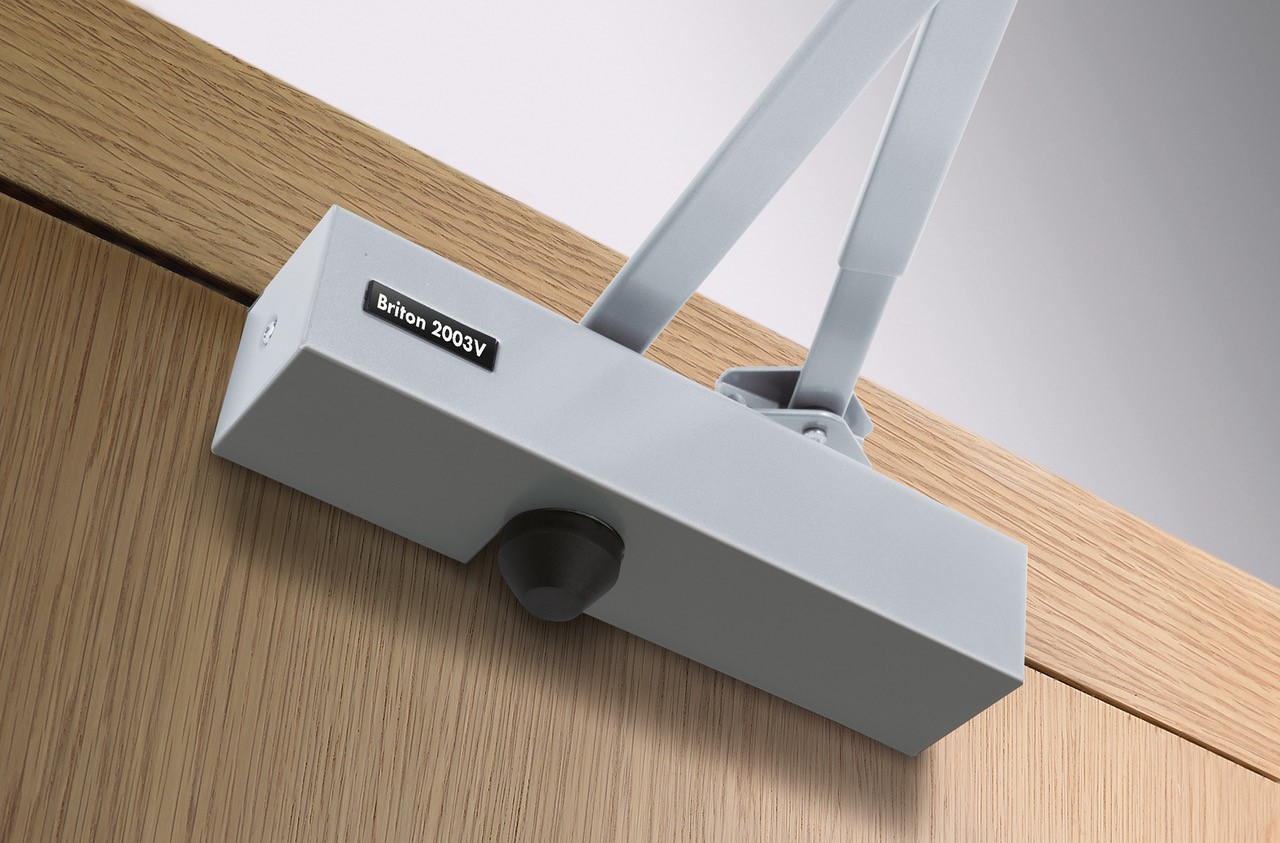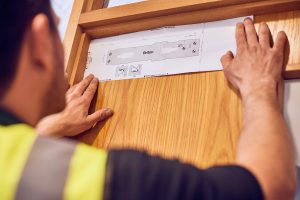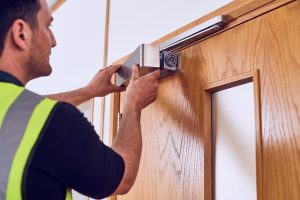 Sue Corrick of Allegion UK discusses the process of retrofitting, and how to correctly approach door hardware projects to ensure a fire door’s integrity is retained.
Sue Corrick of Allegion UK discusses the process of retrofitting, and how to correctly approach door hardware projects to ensure a fire door’s integrity is retained.
The act of retrofitting – in the context of the built environment – is often defined as the addition of new components or features to older systems to make a building perform better. A retrofit can develop in various forms, ranging from small, single-room improvements to larger, full-scale projects, and while each can present specific benefits, ultimately, most are completed to enhance the fabric of a building’s infrastructure.
Retrofitting doesn’t come without its downsides, however. When it comes to modernising door hardware, despite the potential ergonomic and environmental benefits, if not approached correctly, retrofitting can quickly become a counterintuitive move, causing headaches, and posing complications later down the line. Sue Corrick of Allegion UK explains the pitfalls and how to avoid them:
“With the built environment contributing some 40% of the UK’s carbon emissions, retrofitting has emerged as a popular solution for advancing the energy efficiency of buildings. For large or ageing structures, a retrofit provides decision makers the option to fix key problem areas and is a more attractive proposition when you consider the alternative of large-scale reconstruction – both economically and environmentally speaking.
“Aside from transforming a building’s efficiency, retrofits can offer additional enhancements to a building and the quality of life within. Door hardware for example is a component that plays a vital role in the fire safety, security and traversal of a building, and so it’s crucial to ensure it remains operative throughout a building’s lifecycle. Over time, ageing door hardware can become outdated or damaged and, in the process, will risk the integrity of a building’s fire safety. Because of this, it must be repaired or replaced quickly and professionally.
“However, when it comes to retrofitting door hardware, there’s plethora of options available, meaning it’s easy to fall into the trap of going backwards in quality. Replacing door hardware with unsuitable, low-cost, low-quality substitutes, can further risk the integrity of a building’s fire doors and the safety of occupants within. The truth is, while the process of retrofitting can be highly advantageous, the difficulties of an unreliable or poorly retrofit product can outweigh the benefits.”
Upon completion of a retrofit, a sub-standard door hardware component may result in:
- A fire door not performing as intended or as it did when it was originally fire tested;
- A breach of Regulatory Reform (Fire Safety) Order; and/or
- A rise in additional costs – associated with replacing the upgraded component that performs worse than the original hardware.
Retrofit done right
Effective retrofit projects can make a crucial difference to a building, but throughout the venture, emphasis must be put into installation and compliance to ensure selected hardware is fit for purpose. Corrick continues:
“A certified fire door and its hardware must always be able to fully close and remain closed by itself, and the act of retrofitting can’t alter this. Before a retrofit installation begins, decision makers must confirm the selected door hardware is suitable for application. From a compliance standpoint, it’s crucial to check for both UKCA and CE certifications and the associated Declaration of Performance (DOPs) to show the product conforms to the correct standards. Doing so will confirm the hardware is reliable and whether it is suitable for the position it is being fitted in and the level of traffic the fire door will receive. It’s also important to check whether retrofit hardware is certified in any required functions – such as delayed action and backcheck to remain effective and operational in application.
“When fitting door hardware replacements, it’s critical installers check the footprint dimensions to make sure they’re exact, as well as being mindful of drilling holes directly into the door – as this will hinder its ability to compartmentalise in the event of a fire. In terms of fixing positions, installers must also ensure they accurately align with the existing holes in the door and frame. Should they no longer align, the holes left in the door or frame need to be filled to retain their reliability in a fire situation and ensure that the door holds its certification of how it was originally certified to operate. In this instance, you should also have the door certified by a FDI (fire door inspector).
“In accordance with BS EN 1154, when retrofitting a door closer, the product must also be fitted to the manufacturer’s instructions and not just the existing fixing positions. For example, installers must check the hinge to bracket fixing to make sure they are the same as this will help ensure the performance of the door isn’t jeopardised in any way. It’s always good practice to refer to the original manufacturer’s product instructions.
“Finally, decision makers can also refer to the Code for Construction Product Information (CCPI). As part of the updated Building Safety Bill and the regulatory framework known as the Golden Thread of Information, all product information found under the CCPI is required to be clear, accurate, up-to-date, accessible and unambiguous. By selecting and installing CCPI listed products, decision makers can rest easy knowing their retrofit is complete with tried and tested methods – because when it comes to retrofit projects, it pays to get it right the first time.”
Sources:
https://www.pbctoday.co.uk/news/energy-news/decarbonising-construction-2/100961/
https://www.gov.uk/guidance/using-the-ukca-marking
https://www.gov.uk/guidance/ce-marking
https://www.gov.uk/government/collections/building-safety-bill
https://www.gov.uk/government/publications/building-safety-bill-factsheets/golden-thread-factsheet



